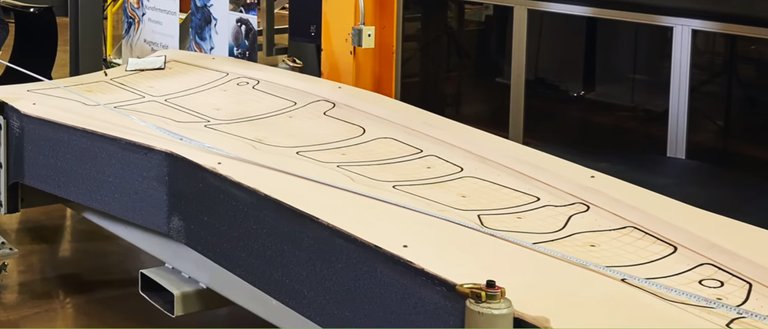Setting the World Record
Researchers at the U.S. Department of Energy’s Oak Ridge National LaboratoryOak Ridge National Laboratory (ORNL) made a world record—and headlines—this week, when it unveiled the world’s largest solid 3D-printed item.
The 3D-printed object is a trim-and-drill tool, a special tool used by aircraft manufacturers like Boeing to build the wings on its passenger airplanes. ORNL’s version of the tool stands at 17.5 feet long, 5.5 feet wide, and 1.5 feet tall (5.3 x 1.7 x 0.5 m)—practically the size of a large sports utility vehicle—and it took the laboratory only 30 hours to print with its Big Area Additive Manufacturing Machine using carbon fiber and composite plastic materials.
Guinness World Records judge Michael Empric said the tool reached 82.4 cubic feet (2.3 cubic meters), surpassing the previous record of 10.6 cubic feet (0.3 cubic meters) for a 3D-printed item.

Practical Applications
Besides setting a new world record, the trim-and-drill tool is really meant to be used to secure Boeing’s 777x passenger jet’s composite wing skin for drilling and machining before it is assembled. Production of the 777x passenger jet in Boeing’s St. Louis production facility is set to begin in 2017, with a delivery target of 2020.
“The existing, more expensive metallic tooling option we currently use comes from a supplier and typically takes three months to manufacture using conventional techniques,” said Leo Christodoulou, Boeing’s director of structures and materials. “Additively manufactured tools, such as the 777X wing trim tool, will save energy, time, labor and production cost and are part of our overall strategy to apply 3D printing technology in key production areas.”
This isn’t ORNL’s first foray into 3D printing. The research facility, which has printed a working Shelby sports car, and an Army Jeep, among other items, has been working on 3D printing methods to create wind turbine blade molds since current processes are not just complex, but also time and energy consuming.